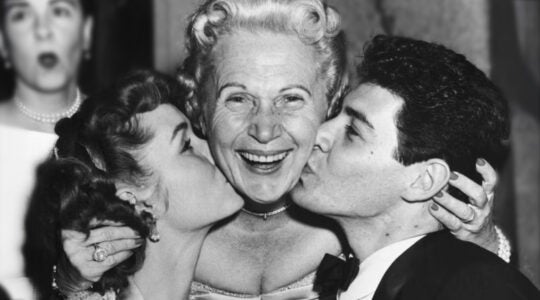Years ago, I wrote a short story called "The Institute for Lenny Bruce Studies." The idea was that a wealthy Jewish donor created a think-tank on a sleepy New England campus, dedicated to jump-starting the "secular Jewish prophethood" that inspired him as a young radical. Institute Fellows would come from the fields of academics, politics, religion and stand-up comedy, and the two-year curriculum would include the poetry of Allen Ginsberg, the songs of Bob Dylan and, of course, the routines of Lenny Bruce.
The story was intended to be a satire of many things, including the reverence with which many baby boomers held the trickster hipsters listed above. It was written during the ironic ë90s, when everything was deconstructed and winked at, but it was never finished. Why? Because, in retrospect, the story was not really a satire. This imaginary institute represented something closer to a wish that these brilliant if flawed Jewish artists would be canonized for their rebuke to "business as usual," whether in the Jewish community or the country at large. My half-written story came to mind again recently in light of a profusion of cultural productions evoking the above figures, including the 50 anniversary publications and programs dedicated to Ginsberg’s Beat anthem "Howl"; a one-man show in New York dedicated to Lenny Bruce; new books by Philip Roth, along with several major polls, essays and anthologies celebrating his writing; and a flood of work by and about Bob Dylan, including his No. 1-selling new album "Modern Times," a cover essay in "Rolling Stone," last year’s documentary by Martin Scorsese, the new Broadway musical of his songs choreographed by modern dance pioneer Twyla Tharp, and a new exhibit at the Morgan Library and Museum, and "Bob Dylan’s American Journey, 1956-1966," the first comprehensive exhibition devoted to the singer-songwriter’s early career.
The almost religious importance these figures have had for me and, of course, for the generation before me, is articulated in Greil Marcus’ fascinating new book "The Shape of Things to Come: Prophecy and the American Voice" (Farrar, Straus and Giroux). Marcus, a wide-ranging cultural critic, makes the argument that the American prophetic voice (represented by figures from Abraham Lincoln to Martin Luther King, and on to Ginsberg, Dylan and Philip Roth) has moved from the purview of politics and social policy to art and culture. Marcus explains that in a country hell-bent on self-expression and self-invention, the older style of prophecy, which called for a community to re-dedicate itself to the sanctity of its founding documents (from Isaiah and the Torah to Lincoln and the Declaration of Independence), has been replaced by the artist crying from the margins of society. Marcus’ catalogue of prophetic voices is even more provocative than mine. Apart from Roth and Ginsberg there is the filmmaker David Lynch, the "pre-punk, post-dada" musician David Thomas, and even the B-movie actor Bill Pullman.
I’ve long argued that any Jewish renaissance in this county will have to include the artistic voices on the front lines of assimilating the radical social changes affecting our society. Marcus, looking at the broader American canvass, holds that cultural prophecy is not merely an adjunct to the religious-political kind, but in fact has replaced it. Marcus is not at all suggesting we listen to music, but stay home from the polls. But his instinct seems to be that we will find our moral bearings in today’s most provocative art, not through our most provocative politicians.
For instance, if we want to know where our country is today, we should look to the songs of Bob Dylan’s 1997 album "Time Out of Mind," which provides "a state-by-state, city-by-city guided tour of an America that has used itself up," or Roth’s novel "American Pastoral," in which, before our very eyes, our "settled landscape of virtue and possibility changes back into a frontier of temptation and ruin."
These insights of Roth, Dylan and Marcus are, collectively, an acerbic vision of an ironic American Pastoral, but Marcus sees this darkness on the edge of town (to quote an honorary Jewish secular prophet, Bruce Springsteen) to be as quintessentially American as apple pie. He reminds us that America’s Puritan mission was born in "a voice of power and self-righteousness," but because of the very grandiosity of that voice "there is no American identity without a sense of portent and doom. This is the other side of the story: the urge of the nation, in the shape of a certain kind of American hero, to pass judgment on itself."
Perhaps this is what I imagined the Institute for Lenny Bruce Studies to be: a lyrical judgment machine, pitting a Jewish moral sensibility against the flawed promise of the American dream.
Daniel Schifrin is a writer and editor living in Berkeley, Calif.
The New York Jewish Week brings you the stories behind the headlines, keeping you connected to Jewish life in New York. Help sustain the reporting you trust by donating today.




